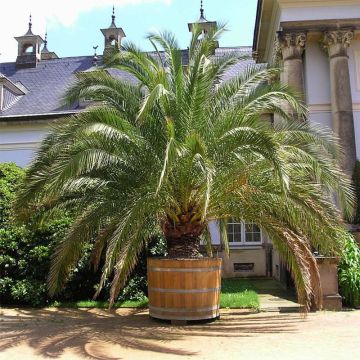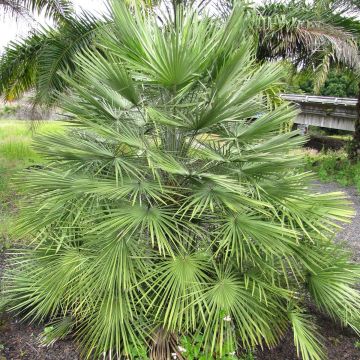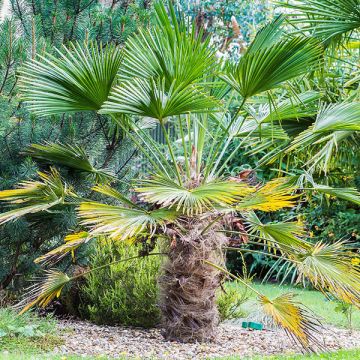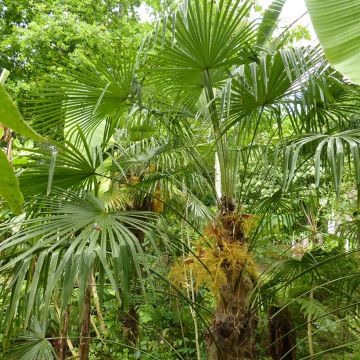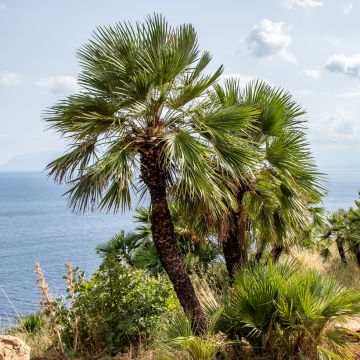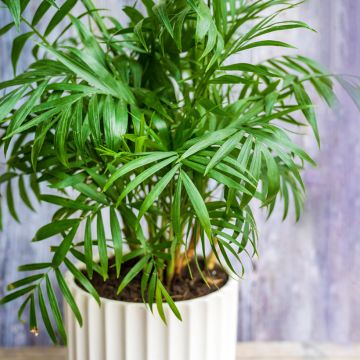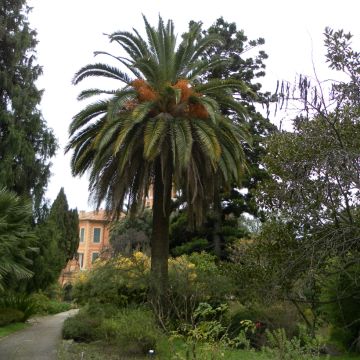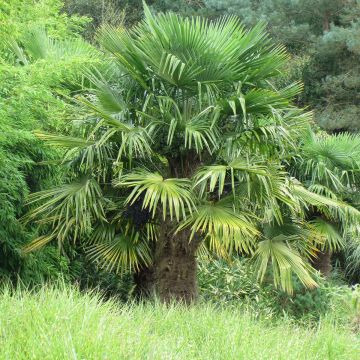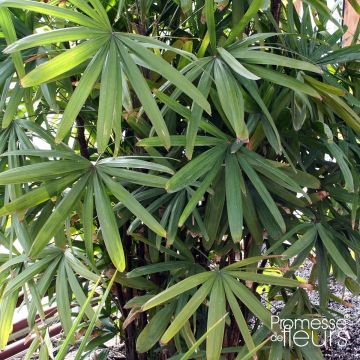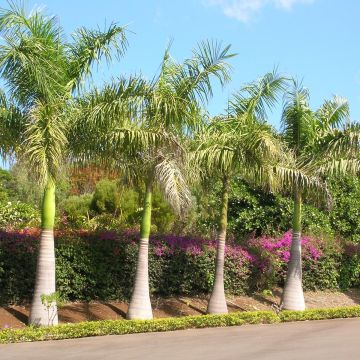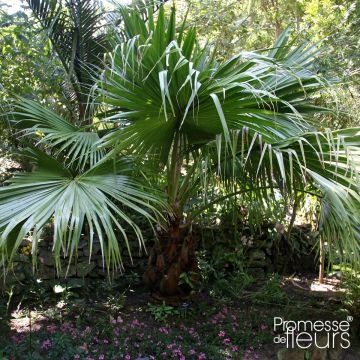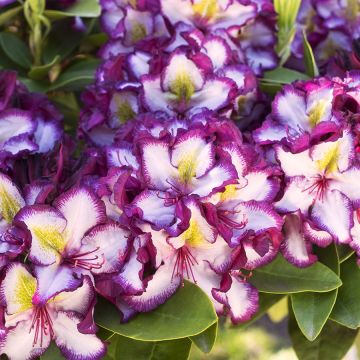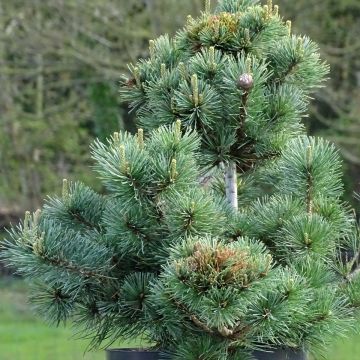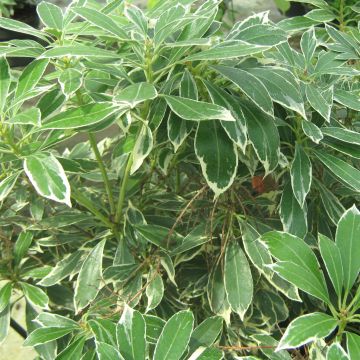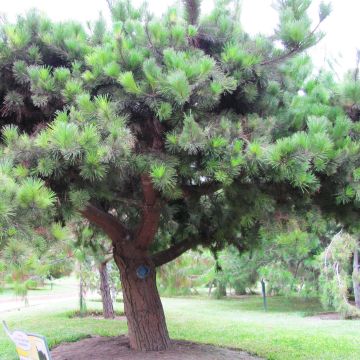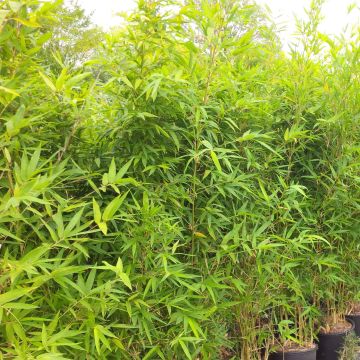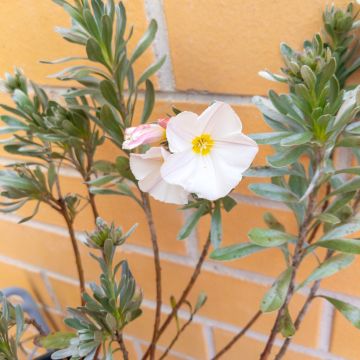

Pseudophoenix sargentii - Buccaneer Palm


Pseudophoenix sargentii - Buccaneer Palm
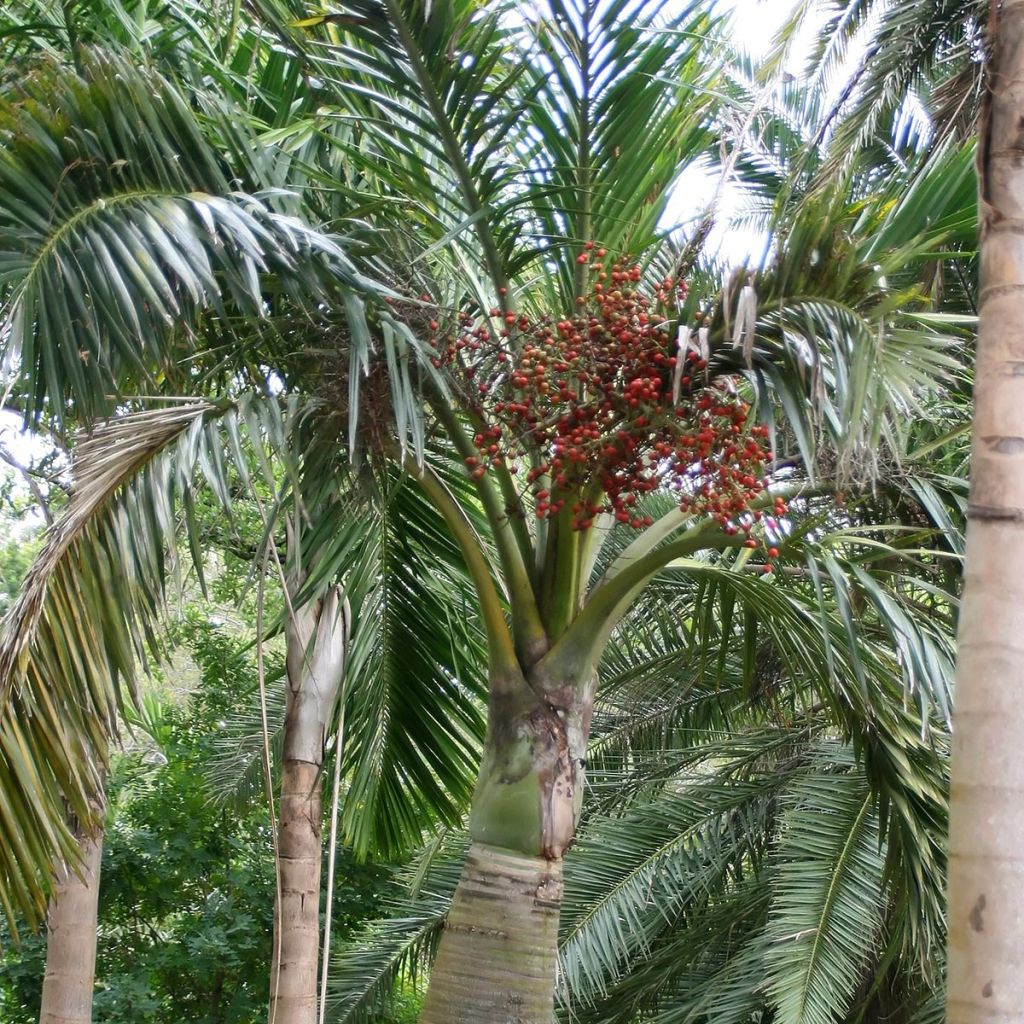

Pseudophoenix sargentii - Buccaneer Palm
Pseudophoenix sargentii - Buccaneer Palm
Pseudophoenix sargentii
Buccaneer Palm, Sargent's Cherry Palm, Florida Cherry Palm
Special offer!
Receive a €20 voucher for any order over €90 (excluding delivery costs, credit notes, and plastic-free options)!
1- Add your favorite plants to your cart.
2- Once you have reached €90, confirm your order (you can even choose the delivery date!).
3- As soon as your order is shipped, you will receive an email containing your voucher code, valid for 3 months (90 days).
Your voucher is unique and can only be used once, for any order with a minimum value of €20, excluding delivery costs.
Can be combined with other current offers, non-divisible and non-refundable.
Why not try an alternative variety in stock?
View all →This plant carries a 24 months recovery warranty
More information
We guarantee the quality of our plants for a full growing cycle, and will replace at our expense any plant that fails to recover under normal climatic and planting conditions.
Would this plant suit my garden?
Set up your Plantfit profile →
Description
Pseudophoenix sargentii, also known as the Florida Cherry Palm or Buccaneer Palm, deserves to be discovered for its great ornamental value, but it remains rare in cultivation due to its slow growth, which can discourage exotic plant enthusiasts. It has a moderate development, an elegant, highly architectural habit, bearing large, dark green, pinnate and arching leaves with a beautiful silver underside, and decorative bright red fruits on mature plants. Its true beauty, rarity, but also its rather accommodating nature, could make us forget that it has retained from its tropical origins a cold-sensitive disposition. Planted in a carefully chosen, large container, it will bring a magnificent exotic touch to a conservatory or winter garden.
Pseudophoenix sargentii belongs to the large family of Arecaceae. It is native to the Bahamas, Belize, Cuba, and the Dominican Republic. It is also found in Florida, Haiti, southeastern Mexico, and Puerto Rico. It is a coastal species associated with dry forests and scrublands, adapted to sandy and limestone soils as well as seasonal drought. In difficult conditions, this palm grows very slowly, so that some adult specimens have a false trunk less than 50 cm (20in) tall. When it encounters favourable growing conditions, in the open ground, this Pseudophoenix reaches about 8 m (26ft) in height. In a pot, it will reach about 2 m (7ft) in height after many years. Its cold resistance is limited, the plant dies back below -1 or -2 °C (30.2 or 28.4°F).
Its trunk, called a stipe, is solitary, relatively thin, slightly swollen, light grey, strongly ringed, and covered with a beautiful waxy patina in its youngest part, on which prominent, brown leaf scars are visible. At the top of this stipe, a crown of pinnate, arching leaves develops, carried by a petiole from 30 cm (12in) to 1 m (3ft) long. Each leaf measures 1.20 m (4ft) to 2.30 m (7ft) in length and has lanceolate leaflets from 30 to 50 cm (12 to 20in) long, irregularly arranged along the midrib, with brown scales.
Flowering takes place in summer. The inflorescences appear on mature subjects, arising between the leaves. They are branched panicles with tiny greenish-yellow flowers. After pollination, globose fruits measuring 1.2 to 1.7 cm (1in) in diameter are formed. They turn bright red at maturity and contain one to three seeds.
The Sargent Palm is a magnificent plant for a temperate greenhouse or conservatory, within reach of every attentive... and patient gardener. Outside of the mildest areas that are generally spared by frosts, it is best cultivated in a container and placed in a conservatory or in a very bright room with some direct sunlight. Grow it alongside dwarf banana trees (Musella lasiocarpa) or other indoor palms like Arecas and Kentias.
Report an error about the product description
Pseudophoenix sargentii - Buccaneer Palm in pictures
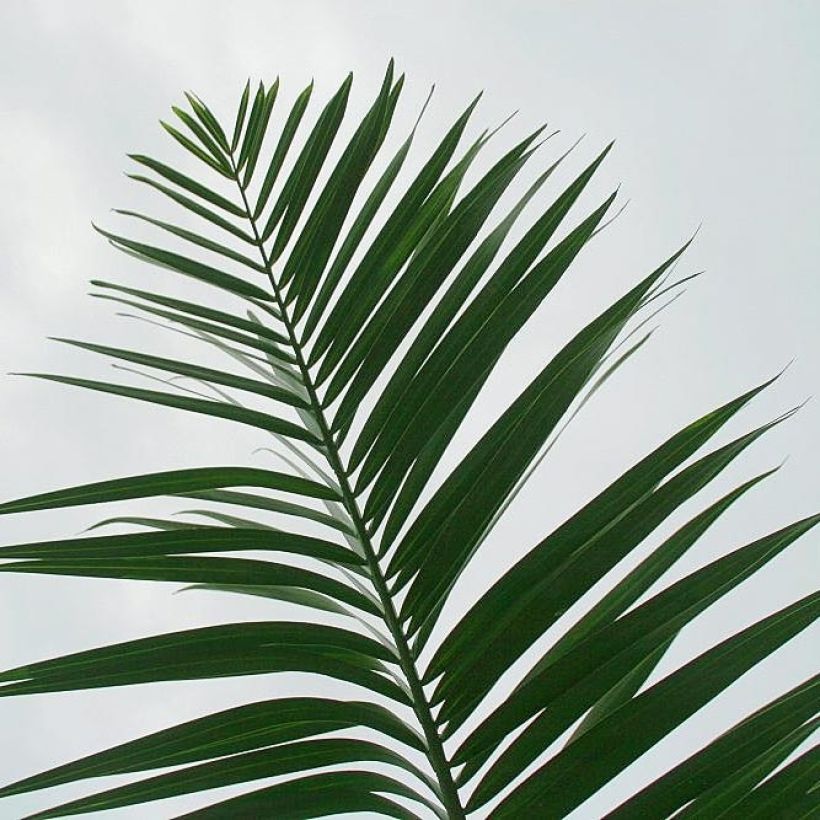

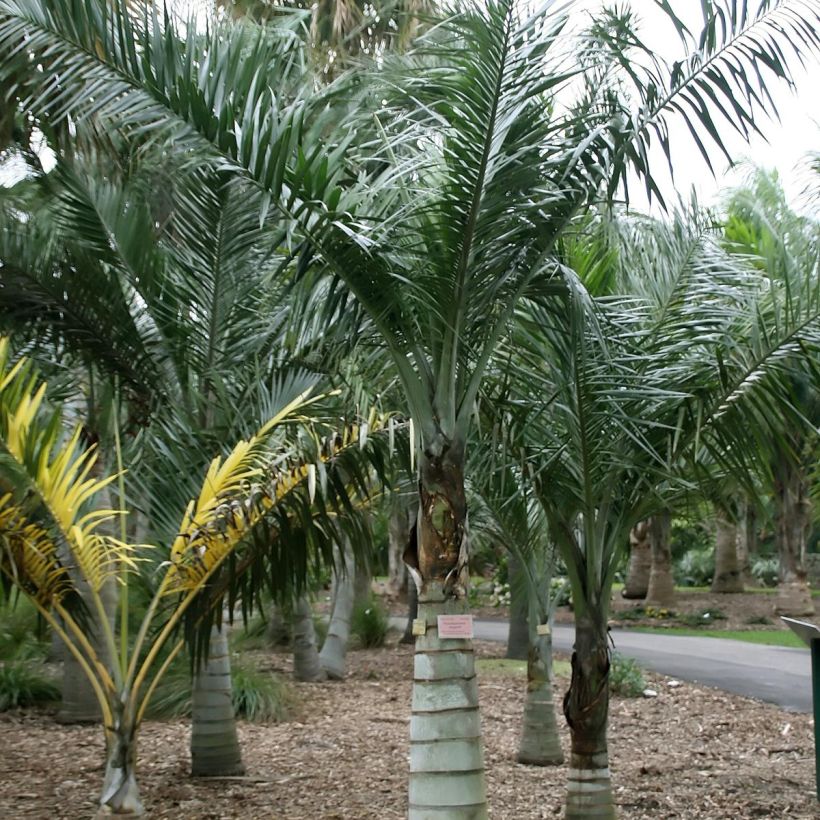

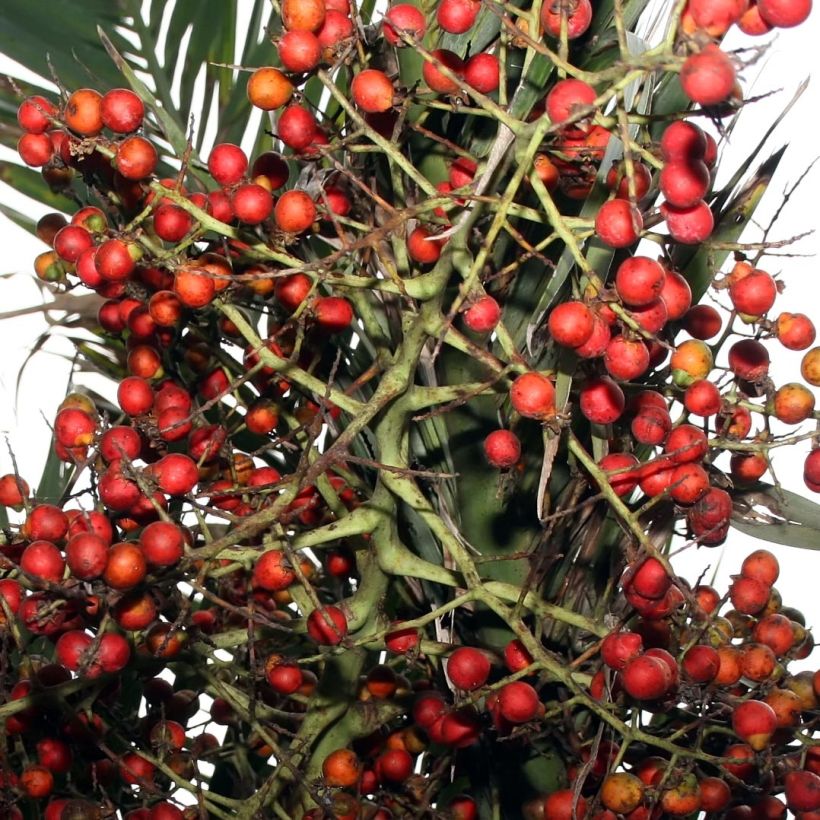

Plant habit
Flowering
Foliage
Botanical data
Pseudophoenix
sargentii
Arecaceae
Buccaneer Palm, Sargent's Cherry Palm, Florida Cherry Palm
North America
Other Palm trees A to Z
View all →Planting and care
This palm tree can only be planted in the open ground in regions spared from frost, as its hardiness does not exceed -2 °C (28.4°F). Elsewhere, plant it in a large container and place it indoors in winter, in a bright or sunny room, in a temperate greenhouse or a conservatory. It is a very accommodating species that accepts any type of well-drained soil, even lime-rich, from occasionally moist to dry (it withstands summer drought in the open ground). It prefers sunny exposures but also performs very well in partial shade. Take it outside on the terrace in May, gradually acclimatise it to full sun, and bring it back indoors in October, before the first frosts.
Container cultivation:
Choose a large pot or a container with a perforated bottom and a capacity of 75 litres. Prepare a mixture composed of 50% loamy soil, 25% potting soil, and 25% sand. Mix well. Partially fill your container, not forgetting to add a drainage layer at the bottom (clay balls, gravel, broken terracotta pots...). Place your palm tree on the mixture, ensuring that the root collar (the area where the roots originate) does not protrude from the pot but is not buried too deep under the substrate. Add the rest of the mixture around the root ball and firm it down. Water in stages to thoroughly saturate the substrate with water and remove air pockets. Place your palm tree in a bright location with direct sunlight. Occasionally mist the foliage and reduce watering in winter. Apply organic fertiliser or compost in spring, and optionally supplement with regular applications of all-purpose fertiliser for indoor plants diluted in the watering water.
Planting period
Intended location
Care
This item has not been reviewed yet - be the first to leave a review about it.
Similar products
Haven't found what you were looking for?
Hardiness is the lowest winter temperature a plant can endure without suffering serious damage or even dying. However, hardiness is affected by location (a sheltered area, such as a patio), protection (winter cover) and soil type (hardiness is improved by well-drained soil).

Photo Sharing Terms & Conditions
In order to encourage gardeners to interact and share their experiences, Promesse de fleurs offers various media enabling content to be uploaded onto its Site - in particular via the ‘Photo sharing’ module.
The User agrees to refrain from:
- Posting any content that is illegal, prejudicial, insulting, racist, inciteful to hatred, revisionist, contrary to public decency, that infringes on privacy or on the privacy rights of third parties, in particular the publicity rights of persons and goods, intellectual property rights, or the right to privacy.
- Submitting content on behalf of a third party;
- Impersonate the identity of a third party and/or publish any personal information about a third party;
In general, the User undertakes to refrain from any unethical behaviour.
All Content (in particular text, comments, files, images, photos, videos, creative works, etc.), which may be subject to property or intellectual property rights, image or other private rights, shall remain the property of the User, subject to the limited rights granted by the terms of the licence granted by Promesse de fleurs as stated below. Users are at liberty to publish or not to publish such Content on the Site, notably via the ‘Photo Sharing’ facility, and accept that this Content shall be made public and freely accessible, notably on the Internet.
Users further acknowledge, undertake to have ,and guarantee that they hold all necessary rights and permissions to publish such material on the Site, in particular with regard to the legislation in force pertaining to any privacy, property, intellectual property, image, or contractual rights, or rights of any other nature. By publishing such Content on the Site, Users acknowledge accepting full liability as publishers of the Content within the meaning of the law, and grant Promesse de fleurs, free of charge, an inclusive, worldwide licence for the said Content for the entire duration of its publication, including all reproduction, representation, up/downloading, displaying, performing, transmission, and storage rights.
Users also grant permission for their name to be linked to the Content and accept that this link may not always be made available.
By engaging in posting material, Users consent to their Content becoming automatically accessible on the Internet, in particular on other sites and/or blogs and/or web pages of the Promesse de fleurs site, including in particular social pages and the Promesse de fleurs catalogue.
Users may secure the removal of entrusted content free of charge by issuing a simple request via our contact form.
The flowering period indicated on our website applies to countries and regions located in USDA zone 8 (France, the United Kingdom, Ireland, the Netherlands, etc.)
It will vary according to where you live:
- In zones 9 to 10 (Italy, Spain, Greece, etc.), flowering will occur about 2 to 4 weeks earlier.
- In zones 6 to 7 (Germany, Poland, Slovenia, and lower mountainous regions), flowering will be delayed by 2 to 3 weeks.
- In zone 5 (Central Europe, Scandinavia), blooming will be delayed by 3 to 5 weeks.
In temperate climates, pruning of spring-flowering shrubs (forsythia, spireas, etc.) should be done just after flowering.
Pruning of summer-flowering shrubs (Indian Lilac, Perovskia, etc.) can be done in winter or spring.
In cold regions as well as with frost-sensitive plants, avoid pruning too early when severe frosts may still occur.
The planting period indicated on our website applies to countries and regions located in USDA zone 8 (France, United Kingdom, Ireland, Netherlands).
It will vary according to where you live:
- In Mediterranean zones (Marseille, Madrid, Milan, etc.), autumn and winter are the best planting periods.
- In continental zones (Strasbourg, Munich, Vienna, etc.), delay planting by 2 to 3 weeks in spring and bring it forward by 2 to 4 weeks in autumn.
- In mountainous regions (the Alps, Pyrenees, Carpathians, etc.), it is best to plant in late spring (May-June) or late summer (August-September).
The harvesting period indicated on our website applies to countries and regions in USDA zone 8 (France, England, Ireland, the Netherlands).
In colder areas (Scandinavia, Poland, Austria...) fruit and vegetable harvests are likely to be delayed by 3-4 weeks.
In warmer areas (Italy, Spain, Greece, etc.), harvesting will probably take place earlier, depending on weather conditions.
The sowing periods indicated on our website apply to countries and regions within USDA Zone 8 (France, UK, Ireland, Netherlands).
In colder areas (Scandinavia, Poland, Austria...), delay any outdoor sowing by 3-4 weeks, or sow under glass.
In warmer climes (Italy, Spain, Greece, etc.), bring outdoor sowing forward by a few weeks.






























